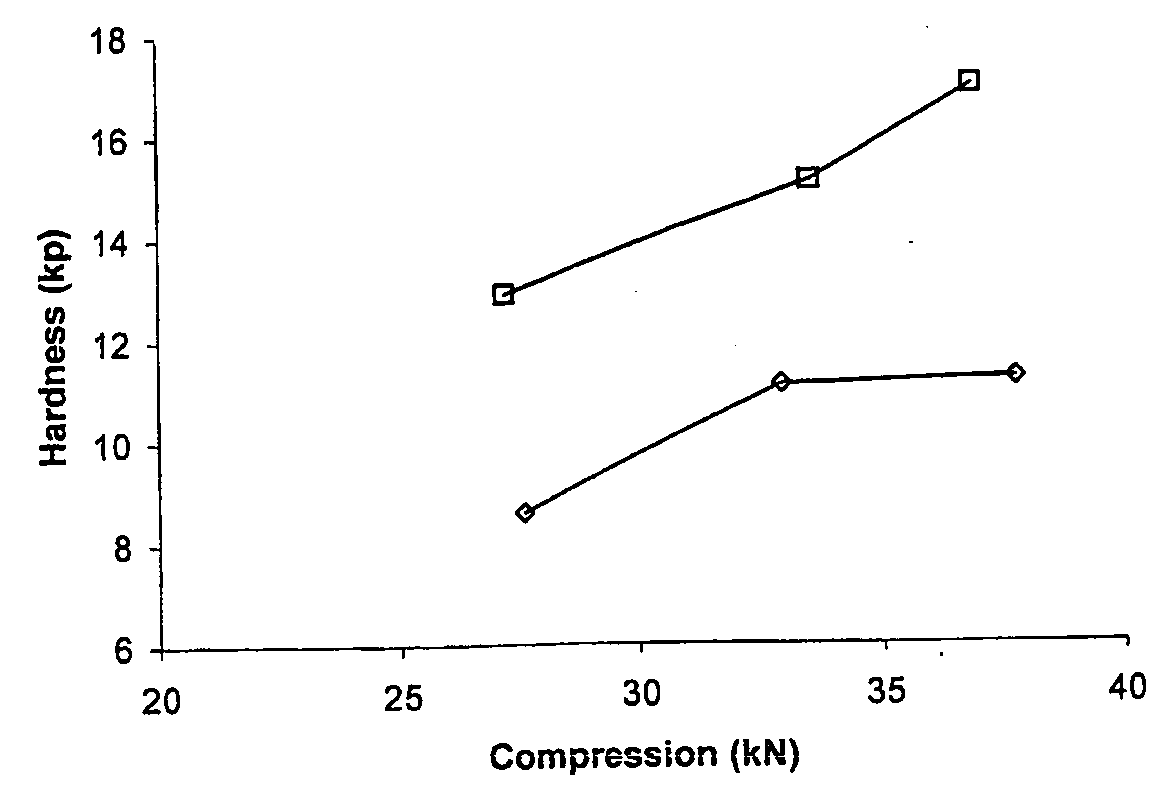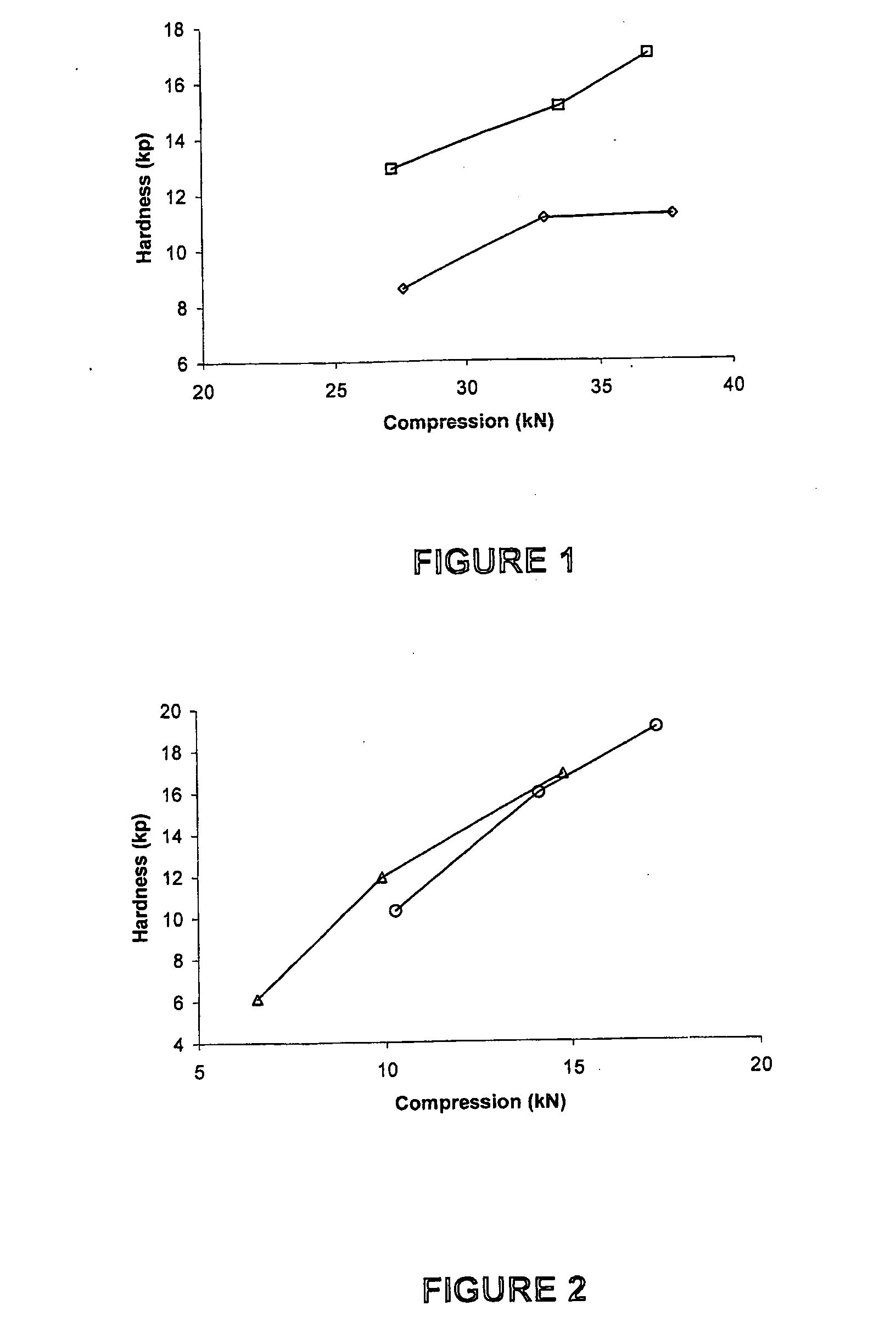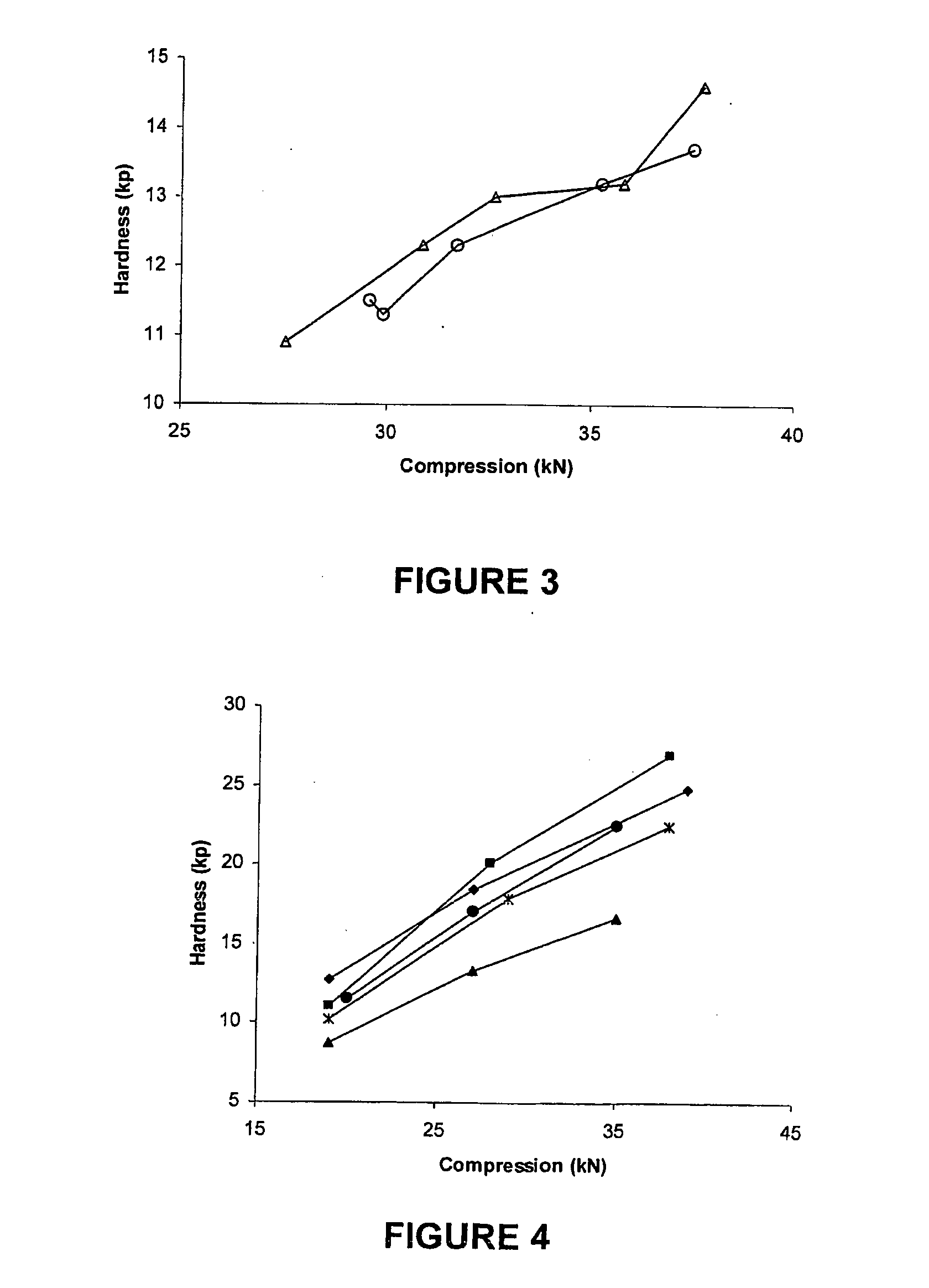Tabletting process
- Summary
- Abstract
- Description
- Claims
- Application Information
AI Technical Summary
Benefits of technology
Problems solved by technology
Method used
Image
Examples
example 1
Tablet Formulation and Process
[0096]A tablet containing the ingredients listed in Table 1 was formed.
TABLE 1Itemmg / tablet#Ingredient% w / w(75 mg doxycycline)1Doxycycline hyclate16.1786.72Lactose monohydrate2.0410.93Microcrystalline cellulose2.0410.94Sodium lauryl sulphate0.110.65Sodium chloride2.1311.46Hydroxypropyl methyl1.457.8cellulose7Hydroxypropyl methyl3.001.7cellulose phthalate8Talc0.3216.19Triethyl citrate0.703.810Lactose anhydrous58.74315.011Starch10.0053.6(corn starch Unipure F)12Crospovidone3.0016.113Magnesium stearate0.301.6
The process for producing the tablet was as follows.
[0097]Items 1 to 4 in Table 1 above were dry blended for a short time before adding the required volume of salt solution. Blending was continued until the granulating solvent (salt solution) was evenly dispersed throughout the dry blend to form the ‘wet granulate’.
[0098]The wet granulate was fed through an extruder to produce long strands of extrudate that were then broken up and rounded on the groove...
example 2
Compressibility of Various Anti-static Agents
[0103]Compression curves were obtained with the use of a Manesty Instrumented tablet press. Tablet blend was fed to the press with stepwise increases in compression force. The compression force was measured via load cells connected to the upper and lower punch holders and their responses logged using proprietary software. Samples of tablets were taken at each compression setting and hardness measured using a Schleuniger hardness tester. A compression curve was then constructed by plotting Compression Force versus the resultant mean hardness (n=10).
[0104]The results shown in FIGS. 1 to 4 were obtained as follows.
[0105]To determine the effect of different anti-static agents on blend compressibility the agents were each used to “dust” previously un-dusted doxycycline pellets at 0.5% w / w. To ensure that the agent was intimately mixed with the pellets the required quantity of agent was added to pre-weighed pellets and passed back and forth bet...
example 3
Anti-static Properties of Various Anti-static Agents
[0108]The reduction in static charge that can be achieved with a number of anti-static agents was determined using a Simco SS2X Electrostatic Locator.
[0109]Baseline Charge
[0110]A number of experiments were conducted and for each experiment approximately 60 g of pellets formed in accordance with Example 1 (Batch # Bx A94-031) were weighed onto a large plastic scoop and then poured to another identical scoop and back again 20 times in rapid succession. This produced the initial static charge which was measured using a Simco SS2X Electrostatic Locator with remote sensor.
[0111]Evaluation of Static Reduction
[0112]Each anti-static agent was evaluated at 0.5% w / w relative to the pellets. Following measurement of the initial charge as above, 0.3 g of a given anti-static agent was added to the pellets and transferred 5 times between two 200 mL glass beakers to disperse the agent.
[0113]Static measurements were conducted only after the charge...
PUM
| Property | Measurement | Unit |
|---|---|---|
| Percent by mass | aaaaa | aaaaa |
| Percent by mass | aaaaa | aaaaa |
| Percent by mass | aaaaa | aaaaa |
Abstract
Description
Claims
Application Information
 Login to View More
Login to View More - R&D
- Intellectual Property
- Life Sciences
- Materials
- Tech Scout
- Unparalleled Data Quality
- Higher Quality Content
- 60% Fewer Hallucinations
Browse by: Latest US Patents, China's latest patents, Technical Efficacy Thesaurus, Application Domain, Technology Topic, Popular Technical Reports.
© 2025 PatSnap. All rights reserved.Legal|Privacy policy|Modern Slavery Act Transparency Statement|Sitemap|About US| Contact US: help@patsnap.com



